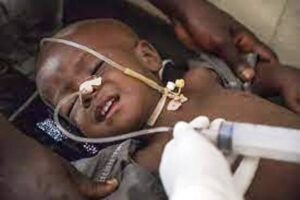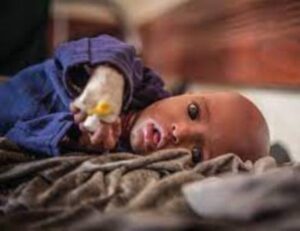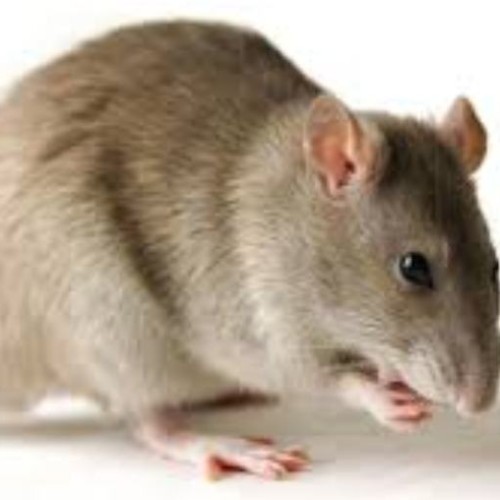Pneumonia kills 700,000 children annually – paediatrician
A paediatrician at the Federal Medical center, Birnin Kudu in Jigawa state Dr. Ummah Idris says it is estimated by the World Health Organization WHO that at least one child under the age of five is dying every 45 seconds globally.
She disclosed this in her keynote address at Child Rights Advocacy Clubs Activities held at Federal Government College Kiyawa, Jigawa State to mark world pneumonia day.
She further explained that, pneumonia remained the major cause of childhood mortality, especially among those living in low and middle income countries with an estimation of over seven million children admitted to hospitals with pneumonia causing low levels of oxygen in their blood, requiring urgent oxygen treatment to survive annually.
Dr Ummah noted that, at least one child under five dies every 45 seconds from pneumonia, which means more than 700,000 children die every year globally.
According to her, pneumonia is a largely preventable and treatable disease but still gets less attention from government and other stakeholders.
Also speaking, the Permanent Secretary of the state ministry of health, Dr. Salisu Mu’azu pointed out that, the state government had institutionalized an oxygen policy and supply management system.
“We have made oxygen to be part of medicines and would soon start procurement and supply of oxygen therapy in each of the primary healthcare facilities across the state for the emergency treatment of pneumonia patients”.
According to him, Save the Children International intervention in pneumonia in the state has demonstrated the need to have an effective chain of oxygen supply in all health facilities in the state.
Mu’azu commended SCI for their intervention which include the supply of medical equipment, manpower training and community engagement.
He added that, SCI contributed to the increase of immunization coverage and reduction of child mortality in the state.
The theme of this Year’s World Pneumonia Day is “Championing the fight against Pneumonia”.
Courtesy: Radio Nigeria, Kaduna
Facts about pneumonia
 Overview
Overview
Pneumonia is a form of acute respiratory infection that affects the lungs. The lungs are made up of small sacs called alveoli, which fill with air when a healthy person breathes. When an individual has pneumonia, the alveoli are filled with pus and fluid, which makes breathing painful and limits oxygen intake.
Pneumonia is the single largest infectious cause of death in children worldwide. Pneumonia killed 740 180 children under the age of 5 in 2019, accounting for 14% of all deaths of children under 5 years old but 22% of all deaths in children aged 1 to 5 years. Pneumonia affects children and families everywhere, but deaths are highest in southern Asia and sub-Saharan Africa. Children can be protected from pneumonia, it can be prevented with simple interventions, and it can be treated with low-cost, low-tech medication and care.
Causes
Pneumonia is caused by several infectious agents, including viruses, bacteria and fungi. The most common are the following.
- Streptococcus pneumoniae is the most common cause of bacterial pneumonia in children.
- Haemophilus influenzae type b (Hib) is the second most common cause of bacterial pneumonia.
- Respiratory syncytial virus is the most common viral cause of pneumonia.
- In infants infected with HIV, Pneumocystis jiroveci is one of the most common causes of pneumonia, responsible for at least one quarter of all pneumonia deaths in HIV-infected infants.
Transmission
Pneumonia can be spread in several ways. The viruses and bacteria that are commonly found in a child’s nose or throat can infect the lungs if they are inhaled. They may also spread via air-borne droplets from a cough or sneeze. In addition, pneumonia may spread through blood, especially during and shortly after birth. More research needs to be done on the different pathogens causing pneumonia and the ways they are transmitted, as this is of critical importance for treatment and prevention.
Presenting features
The presenting features of viral and bacterial pneumonia are similar. However, the symptoms of viral pneumonia may be more numerous than the symptoms of bacterial pneumonia. In children under 5 years of age who have cough and/or difficult breathing, with or without fever, pneumonia is diagnosed by the presence of either fast breathing or lower chest wall indrawing where their chest moves in or retracts during inhalation (in a healthy person, the chest expands during inhalation). Wheezing is more common in viral infections.
Very severely ill infants may be unable to feed or drink and may also experience unconsciousness, hypothermia and convulsions.
Risk factors
While most healthy children can fight the infection with their natural defences, children whose immune systems are compromised are at higher risk of developing pneumonia. A child’s immune system may be weakened by malnutrition or undernourishment, especially in infants who are not exclusively breastfed.
Pre-existing illnesses, such as symptomatic HIV infections and measles, also increase a child’s risk of contracting pneumonia.
The following environmental factors also increase a child’s susceptibility to pneumonia:
- indoor air pollution caused by cooking and heating with biomass fuels (such as wood or dung)
- living in crowded homes
- parental smoking.
Treatment
Pneumonia should be treated with antibiotics. The antibiotic of choice for first line treatment is amoxicillin dispersible tablets. Most cases of pneumonia require oral antibiotics, which are often prescribed at a health centre. These cases can also be diagnosed and treated with inexpensive oral antibiotics at the community level by trained community health workers. Hospitalization is recommended only for severe cases of pneumonia.
Prevention
Preventing pneumonia in children is an essential component of a strategy to reduce child mortality. Immunization against Hib, pneumococcus, measles and whooping cough (pertussis) is the most effective way to prevent pneumonia.
Adequate nutrition is key to improving children’s natural defences, starting with exclusive breastfeeding for the first 6 months of life. In addition to being effective in preventing pneumonia, it also helps to reduce the length of the illness if a child does become ill.
Addressing environmental factors such as indoor air pollution (by providing affordable clean indoor stoves, for example) and encouraging good hygiene in crowded homes also reduces the number of children who fall ill with pneumonia.
In children infected with HIV, the antibiotic cotrimoxazole is given daily to decrease the risk of contracting pneumonia.
– WHO
About author
You might also like
West African scientists in Ghana for CelebrateLAB conference
Local vaccine manufacturing tops agenda Medical Laboratory and research scientists from across West Africa will this week converge in the Ghanaian capital Accra to deliberate on how West Africa can
Doctor says I’ve arthritis of knee because I’m obese, will exercise help?
Dear Prof, I am a 42-year-old female office administrator with a manufacturing company in Abeokuta. I have been suffering from knee pains in both knees for about two years. I
Lassa Fever Update: Red alert in states
More states in the country have put their citizens on red alert following the outbreak of Lassa fever in 10 states of the federation. While a few of the states








0 Comments
No Comments Yet!
You can be first to comment this post!